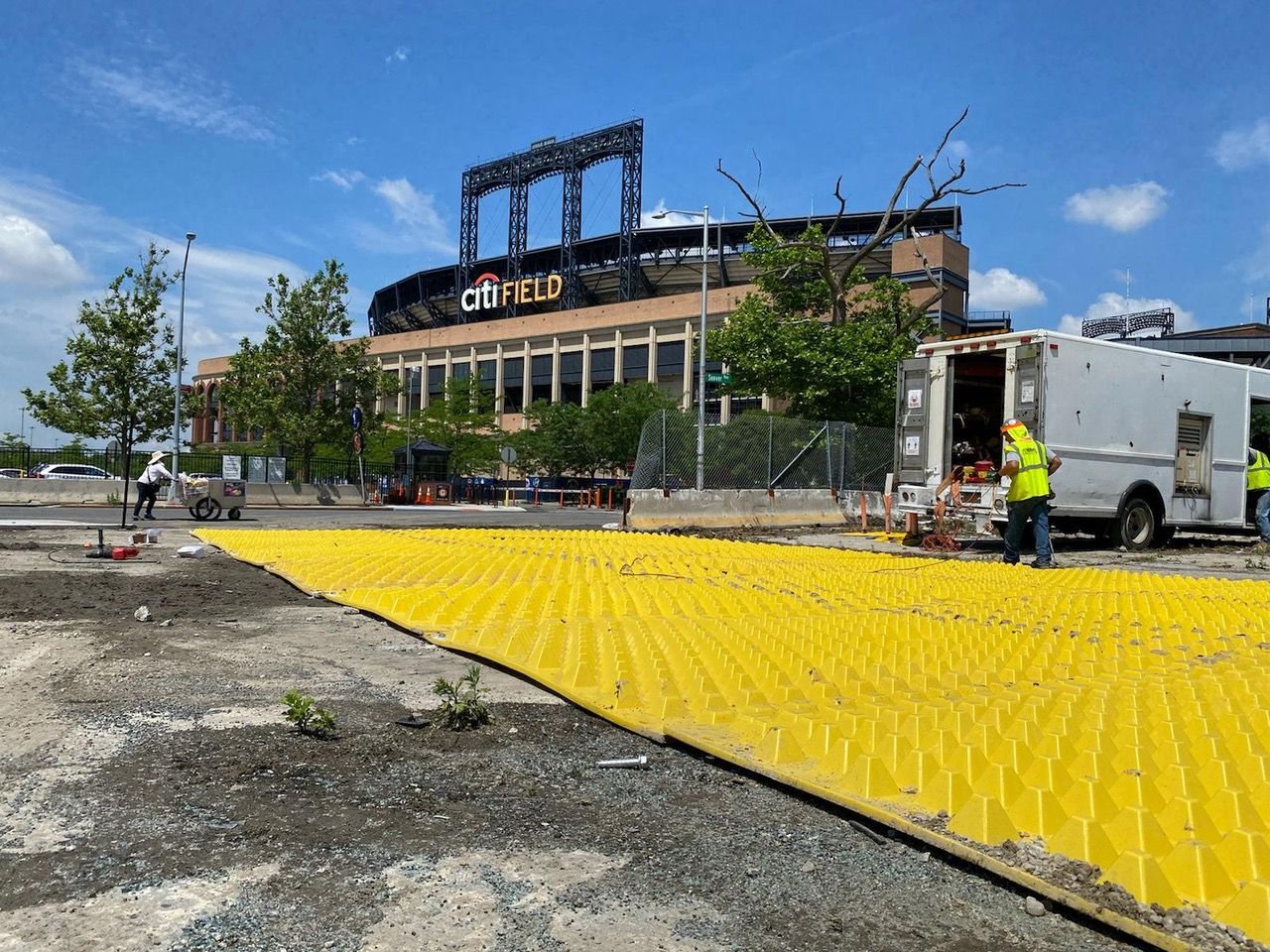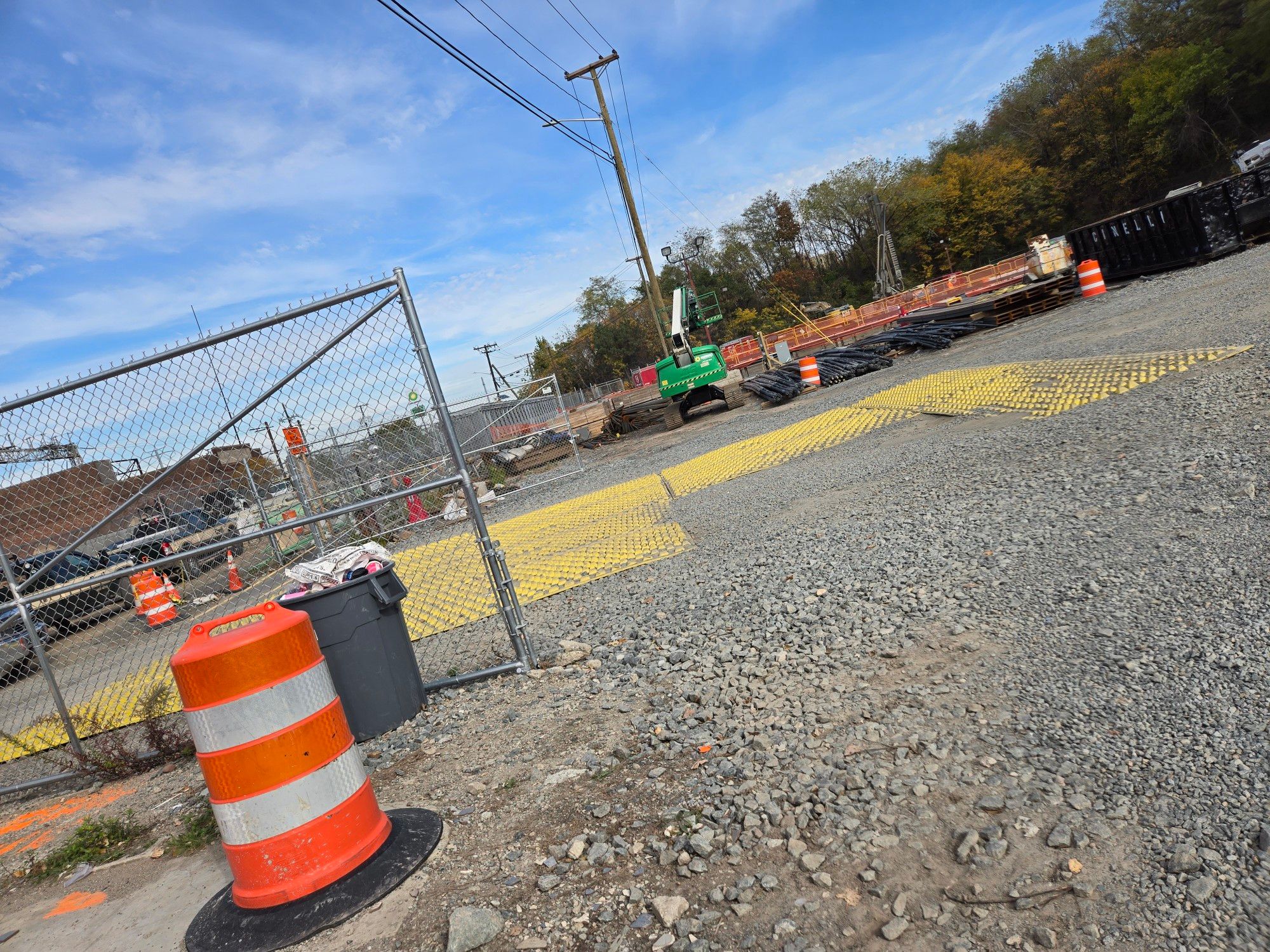New York Stabilized Construction Access Detail
The state of New York has over 25 hundred miles of coastline as well as thousands of freshwater lakes, ponds, and reservoirs. These water bodies are home to a rich variety of plant and marine life. These fresh water sources support the agricultural industry and supply drinking water to the state’s 19+ million residents. Both federal and local governments work to maintain the quality of these water sources to preserve the wildlife, agricultural, residents, and visitors.

New York SPDES General Permit
The Clean Water Act of 1972 (CWA) is the primary federal regulation regarding pollution in water sources. The Act established the National Pollutant Discharge Elimination System (NPDES) permit program to regulate discharges into surface waters originating from construction and industrial activities as well as municipal jurisdictions to ensure that proper containment measures are put in place to limit pollution and excessive sedimentation. Stormwater are separate from the sewage systems and are not treated before entering surface waters. The NPDES permits, commonly called Stormwater Permits, require operators to establish on site containment measures to reduce and minimize the pollution that enters surface waters through the stormwater system.
In State of New York, the New York State Department of Environmental Conservation (NYSDEC) administers the NPDES permit program through the State Pollutant Discharge Elimination System (SPDES). Through the program, permits are issued to contractors, industrial operators, and municipal bodies who have met the requirements for reducing the negative environmental impact of their activities. To obtain a SPDES permit in the state of New York operators must submit a Notice of Intent and create a Stormwater Pollution Prevention Plan (SWPPP) which is then reviewed by the DEC. The purpose of the SWPPP its to identify potential pollution and sedimentation sources and specify which containment techniques or Best Management Practices (BMPs) will be used to minimize pollution and sedimentation. In addition to issuing the permits, and the creation of the SWPPP, a schedule of regular inspections are enforced to ensure the practices and techniques stated in the SWPPP are being followed.
Stabilized Construction Access Detail - The “Blue Book"
One of the first BMPs that is installed on a construction site is the access point stabilization. Any dirt, sediments and contaminants that are tracked out of the site by vehicle tires will be washed down storm drains causing damage to the ecosystem. To minimize sediment track-out, construction sites are required to install a stabilized construction access at each point of egress. The stabilized construction entrance/exit areas are designed to clean vehicle tires and trap sediment and debris before it can be deposited on roadways.
The NY State Standards and Specifications for Erosion and Sediment Control, or simply the Blue Book, includes specifications for a traditional rock construction entrance / exit. The Blue Book includes an example of a traditional construction entrance consisting of a stabilized pad of stone or reclaimed/recycled crushed concrete aggregate which is placed on top of a geotextile fabric. The stone entrance has minimum dimensions 6 inches depth, 12 feet wide, and 50 feet in length. The stone pads must also widen closer to the road to provide an area for trucks to turn from the stabilized pad to the roadway. Two other conditions are listed: 1) on projects using only one access point, the minimum width increases to 24 feet, and 2) residential projects have a reduced minimum length of 30 feet.

These entrances must be maintained in a condition that will effectively remove sediment and prevent vehicle tracking onto public roads. Soil from vehicle tires will become compacted atop the rock surface which will require maintenance. Maintenance can involve either mixing and “fluffing,” which is when the rock is excavated and moved to the surface or top-dressing which requires the stone pad to be covered with a new layer of aggregate. In wet conditions, construction entrance may require frequent top dressing to remain effective.
When vehicles begin to track-out onto the roadway, the debris must be removed immediately. The loose sediment must be removed before it enters storm drains to prevent sedimentation and pollution damage. Street sweeping is commonly used on a regular basis on high traffic sites to prevent sediment from washing into storm drains, ditches, or other paths of natural drainage.
Wheel Washing
When a traditional stabilized construction access is not sufficient to reduce track-out from entering the streets, a wheel wash can be installed. A wheel wash uses pressurized water to clean vehicle tires. Vehicle tires must be washed over a stabilized area which properly contain drainage in a sediment basin to prevent runoff from leaving the site.
Either traditional rock stabilized entrances/exits or wheel wash stations should be placed at each point where traffic exits or enters the construction site, and all construction traffic should be restricted to the these exits. After the project is completed, the contractor must remove the fabric, stone and any other material introduced to the site. Any soil or vegetation that was damaged or removed must be replaced and reseeded for final stabilization.
FODS Reusable Construction Entrance
An effective, modern solution for vehicle track-out is the FODS Trackout Control System. The FODS construction entrance consists of a high-density composite material that is molded into the shape of pyramids. This shape allows the rubber on the tires of a vehicle to flex and deform allowing dirt and other material stuck in the lugs to fall out. The debris collects on the mat at the base of the pyramid which can be easily cleaned after rain events or heavy traffic. The FODS system can be installed over any substrate including dirt, concrete and asphalt.
FODS Trackout Control System has a low operating cost and is both durable and portable. Contractors and operators reuse the same construction entrance on multiple projects and phases over the system’s 10+ year expected life span. FODS can be used on high volume projects in both phased and permanent applications.
By replacing multiple truck loads of rock with a single pallet of FODS, contractors are able reduce their carbon footprint while saving time and money. Each mat is non-toxic and is 100% recyclable providing a sustainable solution to track-out control.
Please reach out to us for more information about using FODS as your Construction Access entrance and exit in New York.
Additional Resources:
Blue Book - Section 2 - Erosion Control Planning and Site Management
Blue Book - Section 2.30 - Stabilized Construction Access Excerpt
SPDES Construction General Permit
NY DOT Highway Design Manual - Chapter 8
Staten Island, NY Transfer Station Saves $4,500 In First Month

